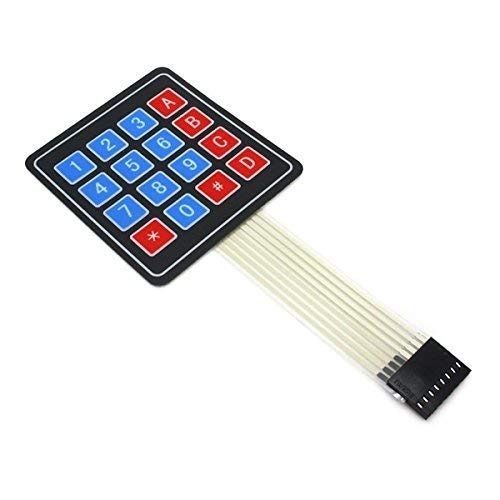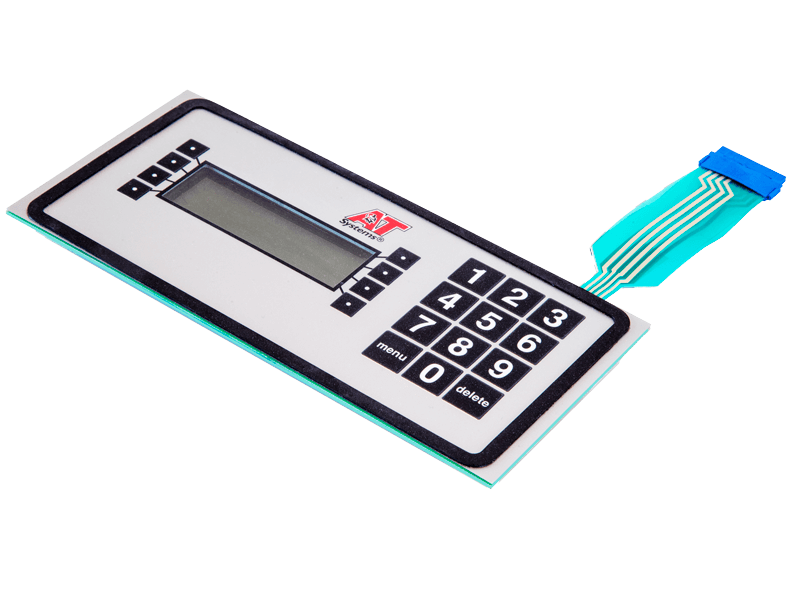Recognizing Membrane Changes: The Key to Resilient and Trustworthy Controls
Membrane layer switches over stand for an essential element of modern user interface layout, blending performance with resilience in different applications. As we check out the intricacies of membrane switches, it comes to be clear that their function in improving control systems is both profound and complicated, raising inquiries regarding just how ideal to leverage their capabilities in future advancements.
What Are Membrane Switches?
Membrane switches are a sophisticated solution in the world of user interface innovation, combining performance and style flawlessly. These devices serve as a user interface between customers and electronic systems, integrating numerous parts right into a small style. Commonly constructed from flexible, thin layers of products, membrane buttons are made to react to touch, enabling users to connect with equipment and electronic tools efficiently.
The primary components of a membrane button include a printed circuit layer, graphic overlay, and a spacer layer that avoids unintentional activation. The graphic overlay can be customized to show brand name identity or user preferences, improving aesthetics while guaranteeing functionality. Membrane buttons are commonly used in numerous applications, including medical gadgets, consumer electronic devices, and commercial equipment, owing to their durability and resistance to ecological variables such as moisture and dust.
Among the crucial advantages of membrane layer switches is their ability to hold up against deterioration, making them excellent for high-traffic atmospheres. In addition, they are light-weight and require very little space, enabling for cutting-edge layouts in product growth. On the whole, membrane layer changes stand for a sensible and effective selection for modern digital user interfaces, marrying innovation with user-centric design principles.
Just How Membrane Switches Over Job
The procedure of membrane changes hinges on an easy yet effective mechanism that equates individual input right into electronic signals. When an individual presses the button, the top layer deforms, allowing a conductive aspect in the circuit layer to make contact with an equivalent conductive pad on the bottom of the graphic overlay.
The design of membrane buttons can vary, but they usually include domes or responsive components to provide responses to the customer, improving the overall experience. The materials used in membrane buttons, such as polyester or polycarbonate, add to their sturdiness and resistance to ecological variables, including dampness and dust. The published circuits are usually enveloped, which shields them from wear and tear over time.

Benefits of Membrane Switches
Among the key advantages of membrane layer buttons is their adaptability in layout, allowing them to be customized to fulfill specific customer requirements and aesthetic requirements. This versatility reaches numerous markets, where various forms, dimensions, and shades can be used to boost customer interaction and visual charm.
Furthermore, membrane switches are understood for their resilience. Built from durable products, they are immune to dust, moisture, and physical wear, which substantially expands their life expectancy contrasted to traditional mechanical buttons. This sturdiness makes them especially appropriate for high-traffic settings and applications needing longevity.

Moreover, membrane switches offer a streamlined account, leading to a thinner style that can be integrated right into YOURURL.com various devices without including bulk. This feature not just boosts the aesthetic appeal however also adds to an extra ergonomic item style.

Applications of Membrane Switches
Straightforward and flexible, membrane switches find applications throughout a broad variety of industries, consisting of medical tools, customer electronic devices, and industrial devices. In the clinical field, these buttons are important to gadgets such as analysis devices, client monitoring systems, and infusion pumps, where integrity and ease of cleansing are crucial. Their capacity to maintain and hold up against harsh environments functionality makes them excellent for such applications.
In customer electronic devices, membrane layer buttons are utilized in products like microwaves, washing makers, and push-button controls - membrane switch. Their sleek style permits user-friendly interface, enhancing the total customer experience while supplying durability and resistance to damage
Commercial equipment also benefits from membrane layer buttons, specifically in control panels a knockout post for equipment and automation systems. These switches use security against dust and moisture, ensuring regular efficiency in tough settings. Their adjustable features permit suppliers to customize them to certain operational needs, improving efficiency and capability.
Selecting the Right Membrane Switch
When selecting a membrane button, it is important to think about various factors that influence efficiency and suitability for specific applications. The primary factors to consider include environmental conditions, tactile responses, resilience, and style specifications.
First, evaluate the operating environment; buttons exposed to moisture, chemicals, or extreme temperatures need certain products to make certain long life and performance. Next, examine the demand for responsive responses. Depending on user communication, some applications may take advantage of a tactile action to verify activation, while others may choose a non-tactile layout for aesthetic factors.
Durability is an additional important aspect; membrane switches ought to be developed to withstand constant usage, impacts, and abrasion. Guarantee the chosen switch can sustain the expected lifecycle, specifically in high-usage scenarios.
Verdict
In conclusion, membrane changes offer as essential components in the style of sturdy and reputable control systems throughout various markets. The flexibility of membrane changes permits for tailored options that satisfy specific operational needs, reinforcing their importance in modern technology.
Membrane switches stand for a vital aspect of modern interface layout, mixing performance with strength in different applications.Membrane layer switches are a sophisticated option in the world of user interface modern technology, incorporating capability and design flawlessly. Typically constructed from flexible, slim layers visit this site of materials, membrane switches are designed to respond to touch, making it possible for individuals to interact with equipment and digital devices effectively.
The layout of membrane buttons can differ, yet they usually integrate domes or tactile aspects to provide responses to the customer, boosting the overall experience.In conclusion, membrane switches serve as crucial components in the style of long lasting and reputable control systems across numerous sectors.